How to Grow Wintergreen Plant
- March 21, 2024
- 0 comment
Wintergreen, known scientifically as Gaultheria procumbens, is a charming, evergreen plant renowned for its vibrant red berries and glossy green leaves. Apart from its visual appeal, wintergreen is celebrated for its refreshing minty aroma and taste. This guide will take you through the key steps of successfully growing wintergreen in your garden.
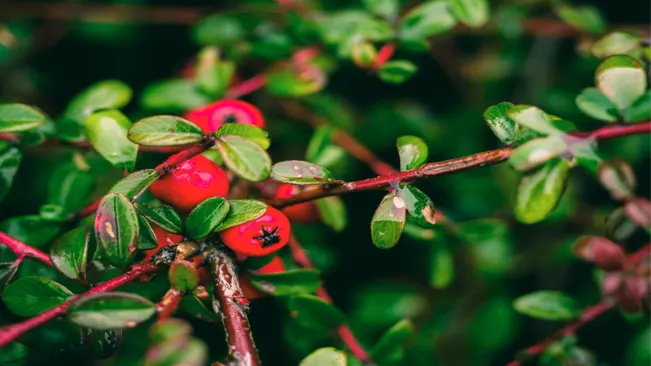
Before you begin, it’s crucial to understand the nature of the wintergreen plant. Native to North America’s forest floors, it thrives in cooler climates and shaded areas. It’s a low-growing shrub, often used as ground cover, and is particularly eye-catching in the winter months when its berries and foliage stand out against the stark landscape.
Choosing the Right Location
- Dappled Sunlight: In its natural habitat, Wintergreen receives filtered light through the tree canopy. This kind of light is perfect as it is not too intense and mimics the light conditions of a forest floor.
- Protection from Elements: Being under tree cover, Wintergreen plants are protected from harsh weather elements, like strong winds or heavy frost, which can be detrimental to their delicate leaves and stems.
Selecting the Ideal Location in Your Garden
- Shaded Areas: Look for areas that receive partial to full shade throughout the day. An ideal spot is under deciduous trees, where the plant can receive more sunlight in winter and spring (when trees are bare) and more shade in summer.
- North Side Planting: If you don’t have suitable tree coverage, planting on the north side of a building can also provide the necessary shade. This side usually receives less direct sunlight throughout the day.
- Avoiding Direct Sunlight: It’s vital to avoid places where the plant would be exposed to prolonged direct sunlight, especially during the hottest parts of the day. This can cause the leaves to scorch, turn brown, and ultimately weaken the plant.
Other Considerations
- Air Circulation: While shelter is important, the location should also allow for some air movement to prevent the growth of fungi or mold, which can occur in overly stagnant, moist conditions.
- Observing Your Garden’s Microclimate: Pay attention to the specific conditions in different parts of your garden. Sun exposure, wind patterns, and moisture levels can vary significantly even within a small area.
- Soil Drainage: Even in a shaded area, ensure the soil has good drainage. Wintergreen does not like to sit in waterlogged soil, which can lead to root rot.
Soil Preparation
Wintergreen plants (Gaultheria procumbens) naturally grow in forest environments, where the soil is typically rich in organic matter and slightly acidic. This environment needs to be replicated for successful growth in a garden setting.
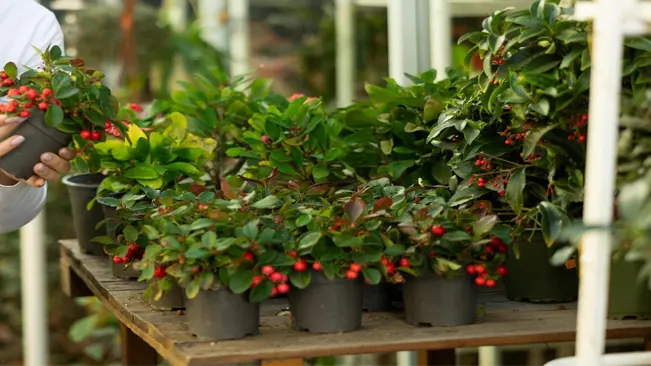
Key Components of Ideal Soil Mix
- Acidic Nature: The pH level is a critical factor. Wintergreen plants prefer a pH between 4.5 and 6.0. This acidity is essential for the plants to absorb nutrients effectively.
- Well-Draining: Wintergreen doesn’t fare well in waterlogged conditions. The soil must allow excess water to drain away quickly while retaining enough moisture to keep the roots damp.
- Rich in Organic Matter: Organic matter provides nutrients and helps retain moisture. It also contributes to the soil’s structure and aeration, which are crucial for root health.
Preparing the Soil Mix
- Peat Moss: This is an excellent ingredient for adding acidity to the soil. It also improves moisture retention while keeping the soil light and airy.
- Pine Bark: Pine bark is slightly acidic and improves drainage and aeration in the soil. It decomposes slowly, providing long-term soil structure benefits.
- Sand: Adding sand to the mix ensures better drainage, which is crucial to prevent root rot in Wintergreen plants.
Steps to Prepare the Mix
- Testing Soil pH: Before adding anything, test the existing soil’s pH. This will guide how much you need to adjust the acidity.
- Creating the Mix: Combine equal parts of peat moss, pine bark, and sand. If your soil is naturally acidic, you might need less peat moss.
- Adjusting the pH: If the pH is still higher than 6.0 after mixing, consider adding more peat moss or an acidifier like sulfur to lower the pH.
- Testing the Drainage: After preparing the mix, check its drainage. Water should drain quickly but the soil should remain moist.
Tips for Soil Maintenance
- Regular pH Testing: Periodically test the soil pH to ensure it remains in the ideal range.
- Mulching: Use organic mulch like pine needles or shredded leaves to help maintain acidity and moisture levels.
- Avoiding Lime and Alkaline Materials: Keep away from lime or other alkaline substances that can raise the soil pH.
Planting
The best time to plant wintergreen is in the spring or early fall. Space the plants about 12 inches apart to allow room for spreading. Plant them at the same depth they were in their nursery pots, and water thoroughly after planting to settle the soil.
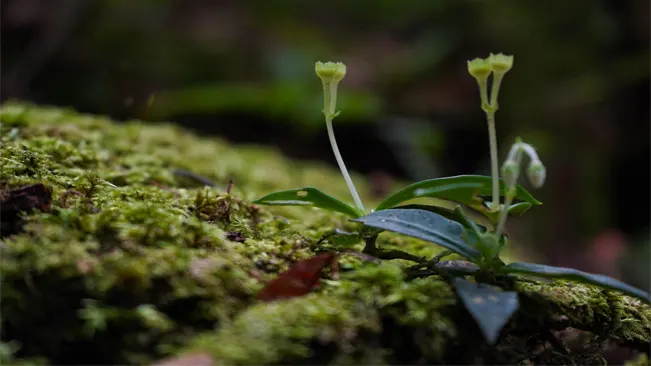
Spacing
- Growth Habits: Wintergreen is a spreading plant. This spacing gives each plant enough room to grow and spread without overcrowding, ensuring each plant gets sufficient nutrients, sunlight, and air circulation.
- Visual Impact: Adequate spacing also ensures that as the plants mature, they form a continuous, lush carpet of green, which is often a desired aesthetic in gardens where Wintergreen is used as ground cover.
Planting Depth
- Root Health: Planting too deep can cause the roots to suffocate or rot, while planting too shallow may expose the roots and dry them out. Keeping the same depth helps the plant transition smoothly from the pot to the soil.
- Stress Reduction: Maintaining the same depth also minimizes the transplant shock, which can slow growth or lead to plant stress.
Watering and Humidity
While wintergreen needs moist soil, it’s important to avoid waterlogging. Ensure the soil remains damp but not saturated. Mulching with organic matter can help retain soil moisture and maintain a humid microclimate around the plant.
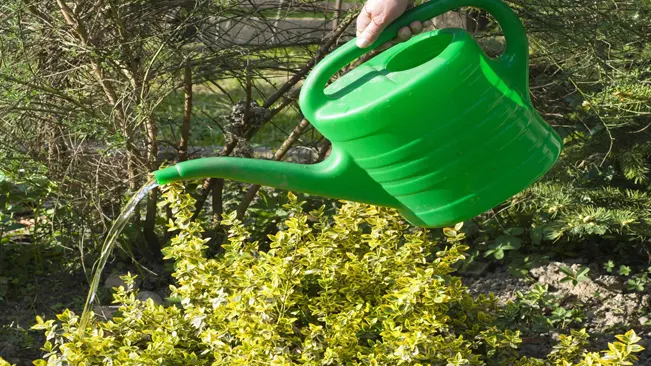
Watering Needs
- Consistency is Key: Regular watering helps keep the soil evenly moist. The goal is to mimic the moist, but not soggy, conditions of their native woodland environment.
- Checking Soil Moisture: Before watering, check the soil. If the top inch feels dry, it’s time to water. During hotter and drier periods, this may mean watering more frequently.
- Watering Amount: The amount of water needed will depend on several factors like soil type, weather, and the plant’s maturity. Generally, a deep watering that allows moisture to reach the roots is beneficial.
- Avoid Over-watering: Over-watering can lead to waterlogged soil, which increases the risk of root rot and other fungal diseases. Good drainage is crucial to prevent this.
Managing Humidity
- Mulching: Applying a layer of organic mulch like shredded bark, leaf mold, or pine needles helps in several ways. It retains soil moisture, regulates soil temperature, and adds nutrients as it decomposes.
- Type of Mulch: Choose a mulch that’s acidic, such as pine needles, which complements the Wintergreen’s preference for acidic soil conditions.
- Depth of Mulch: A layer of about 2 to 3 inches is typically sufficient. Be sure not to pile the mulch directly against the plant stems to prevent moisture-related issues.
- Other Humidity Practices: In very dry climates, consider other methods to increase humidity around the plants, such as installing a nearby water feature or regularly misting the area around the plants.
Fertilizing
Wintergreen plants thrive in acidic soil and benefit from fertilizers that cater to acid-loving plants. These plants generally require a lower level of nutrients compared to more aggressive feeders like vegetables or annual flowers.
Choosing the Right Fertilizer
- Formulation for Acid-Loving Plants: Look for fertilizers that are specifically formulated for acid-loving plants. These typically have a higher content of certain nutrients like iron and sulfur, which help maintain the acidic pH levels these plants prefer.
- Slow-Release Fertilizers: Slow-release or controlled-release fertilizers are ideal for Wintergreen. These fertilizers break down and release nutrients gradually over time, providing a steady supply of nutrients without the risk of overfeeding and burning the roots.
- Nutrient Ratios: A fertilizer with a balanced NPK (Nitrogen, Phosphorus, Potassium) ratio or one slightly higher in Nitrogen is suitable for promoting healthy foliage in Wintergreen plants.
Applying Fertilizer
- Timing: The best time to fertilize Wintergreen plants is in the spring, as they start their active growth phase. This helps the plant establish itself, produce healthy foliage, and prepare for berry production.
- Application Method: Follow the instructions on the fertilizer package for application. Generally, granular fertilizers are sprinkled around the base of the plant and then watered in. Make sure the fertilizer doesn’t touch the plant’s leaves or stems to prevent burn.
- Quantity: It’s important to use the correct amount of fertilizer. Over-fertilizing can lead to salt buildup in the soil, which can damage the plant’s roots and disrupt water uptake. Less is often more when it comes to fertilizing Wintergreen.
- Reapplication: Depending on the product, reapplication might be necessary after a few months. However, with slow-release types, one application in the spring is often sufficient for the entire growing season.
Over-Fertilizing Concerns
- Root Burn: Excessive nutrients, especially salts from fertilizers, can burn the roots, damaging the plant.
- Imbalanced Growth: Too much fertilizer can lead to rapid, weak growth, making the plant more susceptible to diseases and pests.
- Soil pH Alteration: Overuse of fertilizers can alter the soil pH, making it less acidic than Wintergreen plants prefer.
Pruning and Maintenance
Pruning is generally not necessary for wintergreen, but you can trim any dead or damaged branches to keep the plant healthy. Remove weeds around the plant regularly, as they can compete for nutrients and water.
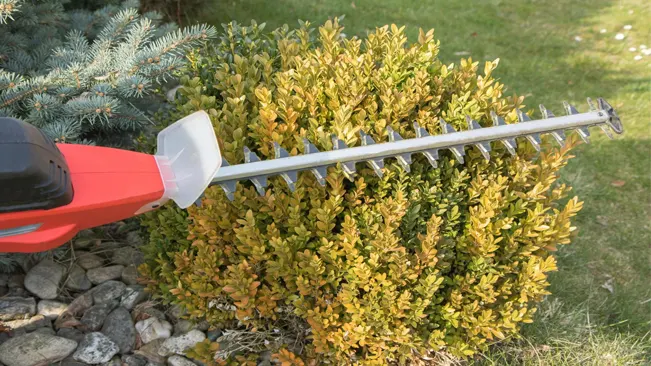
Pruning Wintergreen Plants
- Timing: The best time to prune is in late winter or early spring, before new growth starts. This timing helps the plant recover quickly and reduces the risk of disease infection.
- Dead or Damaged Branches: Inspect the plant for any branches that are dead, damaged, or diseased. These can be trimmed back to healthy wood. Removing these parts prevents the spread of disease and encourages healthier growth.
- Shaping: Wintergreen plants usually maintain a compact and neat shape naturally. However, if you notice any straggly or overgrown branches, you can lightly trim them to maintain the desired shape. This is more about aesthetics than necessity.
- Tools: Use clean, sharp pruning shears or scissors for pruning. Disinfecting the tools before and after use can help prevent the spread of disease.
Maintenance of Wintergreen Plants
- Weeding: Regularly remove weeds from around the Wintergreen plants. Weeds compete for nutrients, water, and light, which can stress your plants. Mulching can help suppress weed growth and also retain soil moisture.
- Mulching: Apply a layer of organic mulch around the base of your Wintergreen plants. This helps in retaining soil moisture, regulating soil temperature, and reducing weed growth. Pine needles, bark chips, or leaf mold are good choices as they complement the acidic soil preference of Wintergreen.
- Watering: Although Wintergreen likes moist soil, it’s important not to over-water. Check the soil moisture regularly, especially during dry spells, and water when the top inch of soil feels dry.
- Inspecting for Pests and Diseases: Keep an eye out for any signs of pests or diseases. Common issues include leaf spots and mildew in damp conditions. Promptly address any problems with appropriate organic or chemical treatments.
- Soil Testing: Periodically test the soil’s pH to ensure it remains in the acidic range (4.5 to 6.0). If the soil becomes too alkaline, it can be amended with soil acidifiers.
Propagation
Propagating Wintergreen (Gaultheria procumbens) is a rewarding way to expand your garden or share plants with others. There are two main methods: stem cuttings and division. Let’s explore each in more detail.
Propagation by Stem Cuttings
- Timing: The best time to take stem cuttings is in late spring or early summer when the plant is actively growing.
- Selecting Cuttings: Choose healthy, non-flowering stems for your cuttings. They should be about 3-6 inches long.
- Preparing Cuttings: Cut just below a leaf node (where leaves are attached to the stem). Remove the leaves from the lower half of the cutting.
- Rooting Hormone: Although not always necessary, dipping the cut end in rooting hormone can improve the chances of successful rooting.
- Planting: Plant the cuttings in a pot filled with a moist, well-draining potting mix. Insert the cut end into the soil, ensuring that the leafless part is buried.
- Environment: Place the pot in a warm, shaded area. You can cover it with a plastic bag or place it in a propagator to maintain humidity, but ensure there is some air circulation to prevent mold growth.
- Care: Keep the soil consistently moist but not waterlogged. Roots typically develop within a few weeks.
- Transplanting: Once the cuttings have rooted and show new growth, they can be transplanted to their permanent location.
Propagation by Division
- Timing: The best time for division is in the early spring before new growth starts.
- Digging Up the Plant: Carefully dig around the Wintergreen plant, trying not to damage the roots. Gently lift the plant out of the soil.
- Dividing the Plant: Using your hands or a clean, sharp knife, divide the plant into smaller sections. Each section should have a good amount of roots and several shoots.
- Replanting: Plant the divisions in their new locations immediately. Ensure the planting area has the same soil conditions preferred by Wintergreen—acidic, well-draining soil rich in organic matter.
- Aftercare: Water the new plants thoroughly and maintain consistent soil moisture as they establish. Mulching can help retain moisture and protect the roots.
Pests and Diseases
Wintergreen is relatively resistant to pests and diseases. However, keep an eye out for signs of trouble and treat promptly with appropriate organic or chemical controls.
Pests
- Aphids: These small, sap-sucking insects can sometimes be found on the underside of leaves. They can cause leaf curling and stunted growth. A strong spray of water or the application of neem oil can be effective against aphids.
- Spider Mites: In dry, hot conditions, spider mites might infest Wintergreen plants. They are tiny and can be identified by the fine webbing on the plants. Increasing humidity and using miticides can help control spider mite infestations.
- Scale Insects: These pests attach themselves to the stems and leaves, feeding on the plant’s sap. They can be controlled by scraping them off or using horticultural oil.
Diseases
- Root Rot: This is often a result of overwatering. The plant’s roots become waterlogged, leading to decay. Ensuring good drainage and avoiding overwatering are key preventative measures.
- Leaf Spot: Fungal leaf spot can appear as brown or black spots on leaves. Improving air circulation, reducing overhead watering, and using fungicides can help manage this disease.
- Powdery Mildew: This fungal disease creates a white, powdery coating on leaves. It thrives in humid conditions with poor air circulation. Treatments include fungicides and ensuring the plant is in a well-ventilated area.
Preventive Measures
- Proper Planting: Plant in well-draining soil and avoid overcrowding to ensure good air circulation.
- Watering Practices: Water the plant at the soil level to avoid wetting the foliage, which can lead to fungal diseases.
- Regular Inspection: Regularly check your plants for signs of pests or diseases. Early detection is key to effective control.
- Cleanliness: Keep the area around the plants clean and free of debris to reduce the likelihood of disease.
Treatment
- Organic Controls: These include neem oil, insecticidal soaps, and homemade remedies like diluted dish soap.
- Chemical Controls: Use chemical pesticides and fungicides as a last resort. Always follow the instructions on the label and use them responsibly.
Harvesting
The berries and leaves of wintergreen can be harvested for culinary or medicinal use. However, it’s important to note that the berries should be consumed in moderation.
Harvesting Wintergreen Leaves
- Timing: The best time to harvest wintergreen leaves is in the late spring or early summer when the leaves are young and aromatic. However, leaves can be picked at any time of the year.
- Method: Gently pluck the leaves from the plant, being careful not to harm the stem or root system. It’s advisable to harvest only a few leaves from each plant to avoid stressing it.
- Usage: Wintergreen leaves have a strong, minty flavor. They can be used fresh or dried for tea, infused in oils, or used as a flavoring in culinary preparations.
- Drying Leaves: To dry, spread the leaves in a single layer in a cool, dry place away from direct sunlight. Once dried, store them in an airtight container.
Harvesting Wintergreen Berries
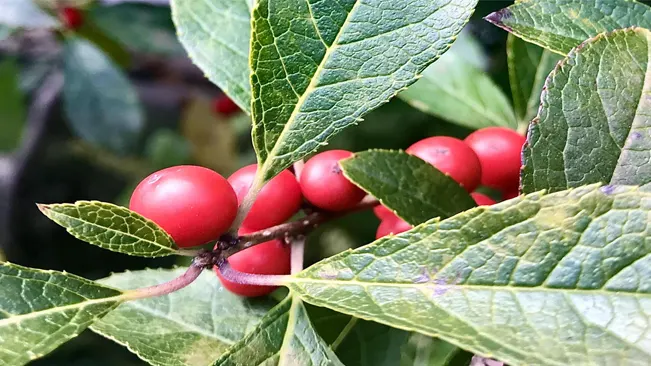
- Timing: Berries typically ripen in late summer to fall and can be harvested once they turn a bright red color.
- Method: Pick the berries by hand, ensuring to leave some behind for wildlife and natural propagation.
- Usage: The berries can be eaten raw in small amounts, used in baking, or made into jams or syrups. Their flavor is more subtle compared to the leaves.
Important Considerations
- Moderation: It’s important to consume wintergreen berries in moderation. They contain methyl salicylate, which in large amounts can be toxic. This compound is also found in the leaves, though in smaller quantities.
- Medicinal Use: Historically, wintergreen has been used for medicinal purposes, including pain relief and treating respiratory conditions. The oil extracted from the leaves and berries contains methyl salicylate, similar to aspirin.
- Identification: Make sure you correctly identify the plant as wintergreen, as some berries in the wild can be poisonous.
- Allergic Reactions: Some people may be allergic or sensitive to methyl salicylate. It’s advisable to try a small amount first if you’re using wintergreen for the first time.
- Culinary Experimentation: In the kitchen, wintergreen pairs well with chocolate, fruit desserts, and can add a refreshing note to beverages.
- Storage: Fresh berries should be consumed soon after harvesting. They can be refrigerated for a short period, but they don’t have a long shelf life.
Conclusion
Growing wintergreen plants can be a rewarding experience for any gardener. With their attractive appearance and aromatic properties, they make a delightful addition to any shade garden. By following these guidelines, you can enjoy the beauty and benefits of wintergreen in your own backyard.
FAQs (Frequently Asked Questions)
- What is the ideal climate for growing Wintergreen plants?
Wintergreen plants prefer cooler climates and thrive in USDA zones 3 through 8. They are well-suited to environments with cold winters and mild summers. - Where should I plant Wintergreen in my garden?
Choose a spot with partial to full shade, as Wintergreen does not tolerate direct, harsh sunlight. Underneath trees or on the north side of a building are good locations. - What type of soil is best for Wintergreen?
Wintergreen prefers acidic, well-draining soil rich in organic matter. A mix of peat moss, pine bark, and sand can create an ideal soil environment. - How often should I water Wintergreen plants?
Keep the soil consistently moist but not waterlogged. Water when the top inch of soil feels dry. Over-watering can lead to root rot. - Do Wintergreen plants require fertilizer?
Yes, but sparingly. Use a slow-release fertilizer formulated for acid-loving plants in the spring. Avoid over-fertilizing to prevent damage to the plant. - When is the best time to plant Wintergreen?
The ideal times are in the spring or early fall. This allows the plants to establish themselves before extreme weather conditions. - How do I propagate Wintergreen plants?
You can propagate Wintergreen through stem cuttings or by dividing mature plants in early spring. - Are Wintergreen plants resistant to pests and diseases?
Wintergreen is relatively resistant, but watch for signs of trouble. Common issues include fungal diseases in overly moist conditions and occasional pest infestations. - Can I use Wintergreen plants for culinary purposes?
Yes, the leaves and berries of Wintergreen are edible. The leaves can be used to make tea, and the berries can be eaten in small quantities or used as flavoring. However, consume them in moderation as they contain compounds that can be toxic in large amounts. - How should I prepare Wintergreen plants for winter?
In areas with harsh winters, mulch around the plants to provide insulation. This helps protect the roots from extreme cold and temperature fluctuations.
For more expert gardening and advice, explore our guides, discover top recommendations in our best section, and delve into in-depth product reviews in our review section. Happy Gardening.

Kristine Moore
Forestry AuthorI'm Kristine Moore, a seasoned garden landscaping professional with over 30 years of experience. My extensive career has been dedicated to transforming outdoor spaces into stunning, sustainable landscapes. With a deep understanding of horticulture, design principles, and environmental stewardship, I have become a respected figure in the field, known for creating harmonious, visually appealing, and eco-friendly gardens. My commitment to excellence and continuous learning in landscaping trends and techniques has solidified my reputation as an expert in garden design and implementation.




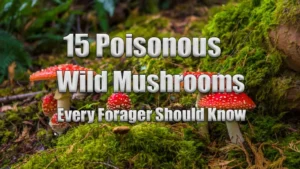








Leave your comment